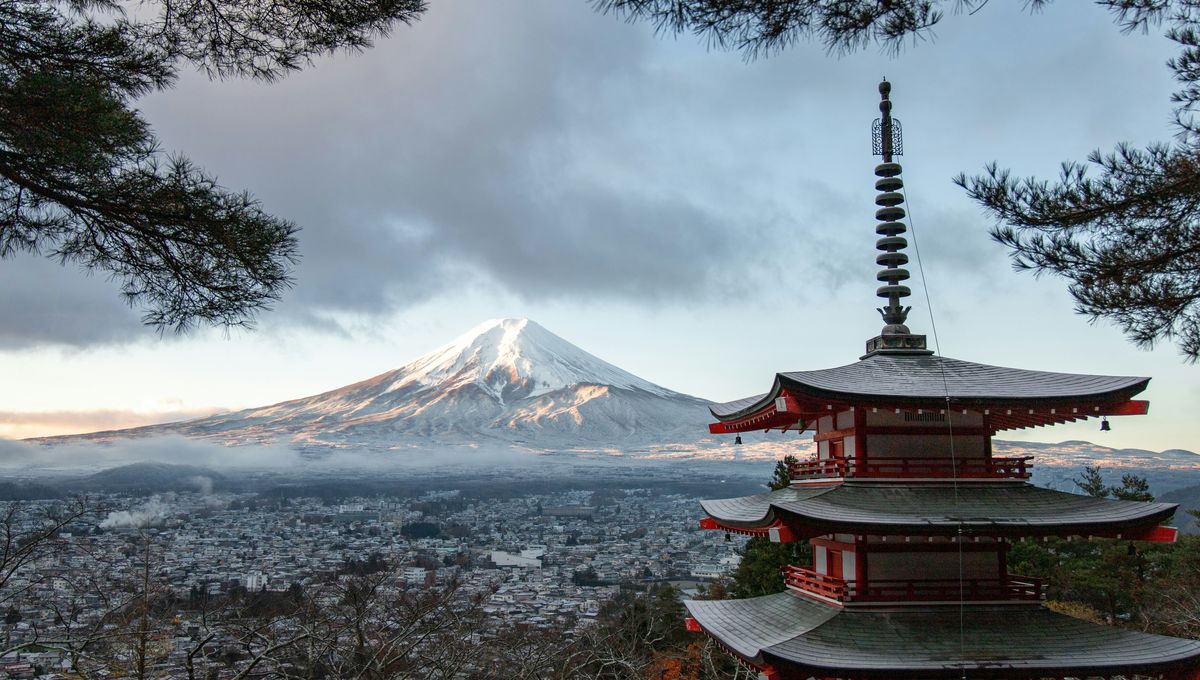
The Tokyo Metropolitan Government has released a video containing AI-generated imagery to warn what would happen if Mount Fuji erupted in the 21st century. While there’s no suggestion the volcano is set to blow any time soon, an eruption within the next century would not be totally unexpected – and the impact on Tokyo would be significant.
The video (below) was released by Japanese local authorities on August 22, 2025, as part of the newly designated Volcano Disaster Preparedness Day, which occurs on August 26.
Mount Fuji sits roughly 100 kilometers (62 miles) southwest of Tokyo, or about a two-hour drive, but the capital is not necessarily safe from its wrath. Although the city would be spared the immediate destruction of running lava and pyroclastic flow, its dense infrastructure and population would be extremely vulnerable to ash fall.
According to the government’s estimates, a shower of volcanic ash could reach Tokyo within hours of an eruption, depending on weather conditions.
Even a light dusting would be enough to paralyze transportation networks, especially their airports, roads, and world-famous railway network. The video warns: “Due to transportation paralysis, there is a possibility that some people will be unable to return and logistics will come to a halt, making it impossible to transport goods.”
The damage wouldn’t stop there. Ash accumulation could clog drainage systems, pollute rivers, and overwhelm water treatment facilities. Tokyo’s power grid would also be at risk of failure, leading to widespread blackouts and communication breakdowns.
Health impacts would add to the chaos. Residents exposed to ash could experience breathing difficulties, eye irritation, and sore throats. Vulnerable groups, such as children, the elderly, and those with respiratory conditions, would face the greatest risks.
“We need to arm ourselves with facts and prepare for disaster in our daily lives,” the video concludes, showing a family stocking their cupboard with canned food, water, and a first-aid kit.
Japan has good reason to be wary of Mount Fuji. It’s been over 300 years since the volcano’s last confirmed eruption between 1707 to 1708, known as the Hōei eruption. Although there was no official death toll from the historic eruption, it blanketed the surrounding region with thick ash, ruining crops and damaging the farmland.
Studies have stated that crop fields in impacted areas of the Hōei eruption are “still far from recovery” even today. The eruption also belched out so much ash that it reached Tokyo (then called Edo), where residents suffered widespread respiratory problems.
Volcanoes don’t run like clockwork, so their activity is notoriously tricky to predict with certainty. Nevertheless, Fuji is considered active, and an eruption in the coming centuries would make sense, statistically speaking. The Japanese giant has erupted at least 16 times since 781 CE, but has been quiet for nearly three decades, which is an uncomfortable statistic if you live within its neighborhood.
Source Link: Government Warning Uses AI Video To Show What Will Happen To Tokyo If Mount Fuji Erupts